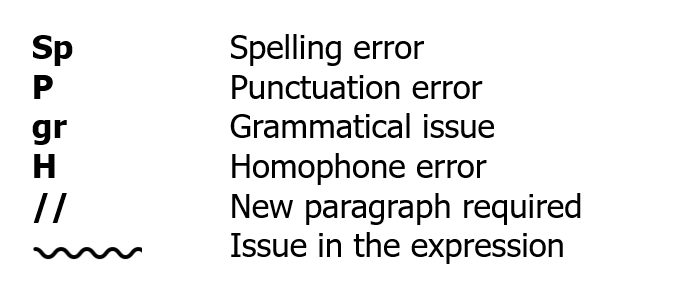Marking, feedback and assessment
Rationale
One of the most important roles of a teacher is to give constructive feedback to students, focusing on success and improvement needs, against the learning intentions and objectives.
Feedback is an integral part of the learning process that usually comes after students have attempted a task, problem, challenge or assessment.
The following types of feedback all have their place and worth:
- Feedback from both formative assessment (with the intention of IMPROVING learning) and summative assessment (with the intention of EVALUATING) learning
- Both written and verbal feedback
- Feedback from teacher to student and student to teacher
- Feedback from students to peers and to themselves
Written feedback can be time consuming but is worthwhile when it results in improved learning. Therefore, an appropriate balance must be struck between time invested in providing effective written feedback and time invested in planning effective lessons.
Fundamentally, effective feedback promotes a growth mindset where students embrace errors as part of the learning process.
What are the principles that guide the school’s approach to marking?
Core principles
Effective feedback at The Hurst School is given in accordance with the following core principles:
- Effective formative feedback must be acted upon by the student for their learning to benefit
- Effective feedback is specific, clear and personalised
- Effective feedback makes it clear how the student has performed in relation to the intended learning
Whole-school ‘non-negotiables’
To ensure whole-school consistency, all staff will apply the following ‘non-negotiables’ when providing feedback:
- The teacher will provide regular individual feedback to students.
- When providing written feedback, teachers will use common acronyms: WWW (what went well) and/or EBI (even better if) and/or NS (next steps)
- When provided as part of written feedback, ‘next steps’ will be completed by the student and checked and acknowledged (either verbally or otherwise) by the teacher
- The school Literacy Across the Curriculum (LitAc) marking code* will be used when teachers provide written feedback on all extended writing**
- Teachers will use red pen when giving written feedback and students will use green pen when responding to written feedback
*MFL will use their own language specific literacy marking code
**Extended writing counts as a paragraph or more in length - as a minimum, the first five mistakes will be flagged up
Departmental Variations
Just as The Hurst School recognises that teaching styles will vary across departments, so too will the use of marking, feedback and assessment.
These agreed variations can be found in Appendix 1.
How is students’ work marked?
The Hurst School make use of four forms of marking and feedback:
- Formative feedback and marking
Formative marking provides feedback as to how students can improve. It does not grade. This practice of assessment for learning is one of the best ways that we can encourage students to engage with assessment.
In this process, teachers should highlight areas of strength (WWW) and areas to be developed (EBI/NS) which then supports students to ‘close the gap’ in their learning.
In order for the marking to be formative, the information must be used and acted upon by students. When work has been ‘quality marked’, students must spend time during the following lesson reading and then making focused improvement(s) on their work.
- Summative feedback and marking This type of feedback and marking is associated with work where grades can be given linked to performance criteria and benchmarks, most notably the GCSE grading system of 1-9.
- Verbal feedback Whilst ‘quality marking’ has a positive impact on a student’s outcomes, verbal feedback will be used much more regularly and in a bespoke manner, to support the progress of all students.
- Self- and peer- assessment There will be times when students are encouraged to self-evaluate their own progress, or the progress of others, identifying the successes and looking for improvements based on identified success criteria.
This engagement with the assessment process develops the students’ knowledge and understanding of assessment criteria, enabling success to become much more visible and transparent.
Literacy across the Curriculum Marking Code
In order to demonstrate consistency in the way that students’ literacy is addressed, all staff will use the following codes in their marking:



